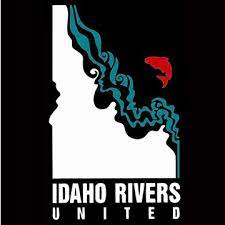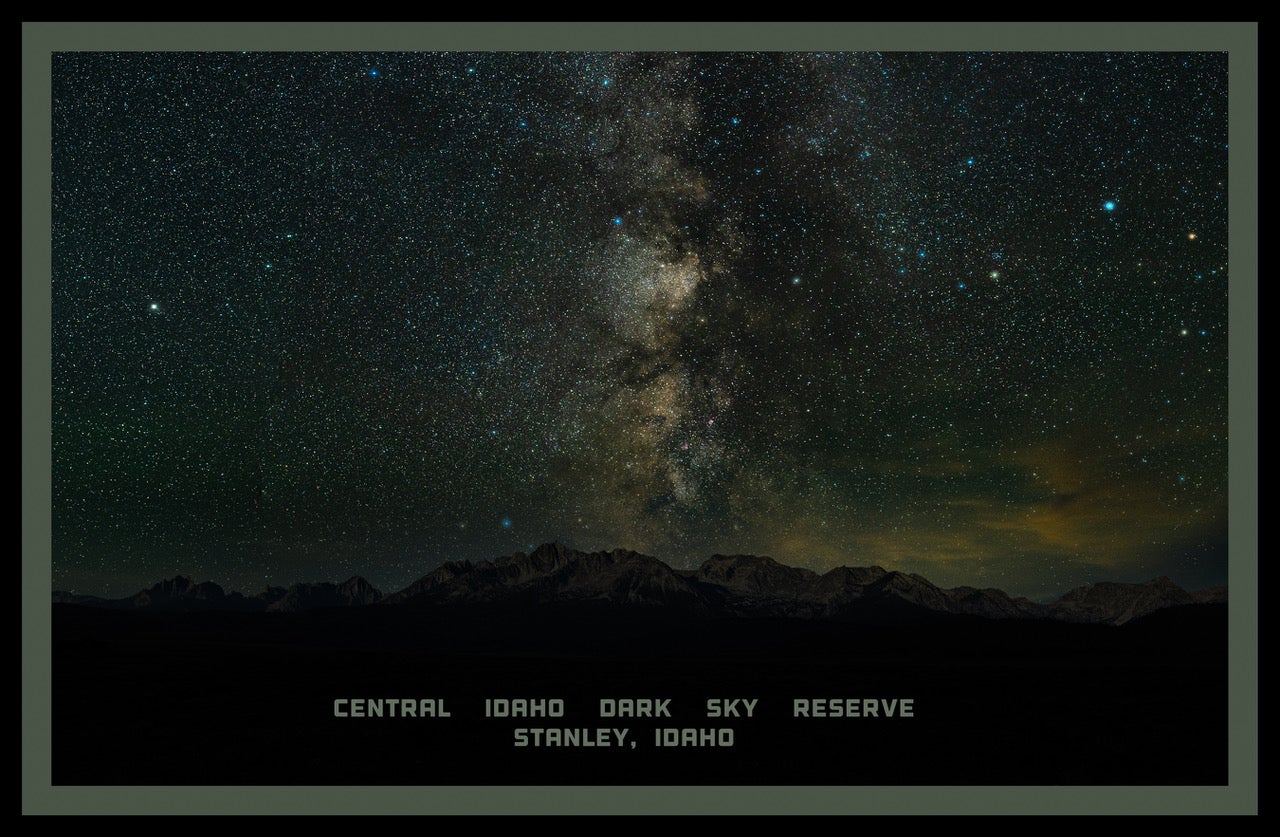
Download a printable pdf of this report
The Sawtooth National Recreation Area at 50: Our Legacy and Future Challenges
Introduction
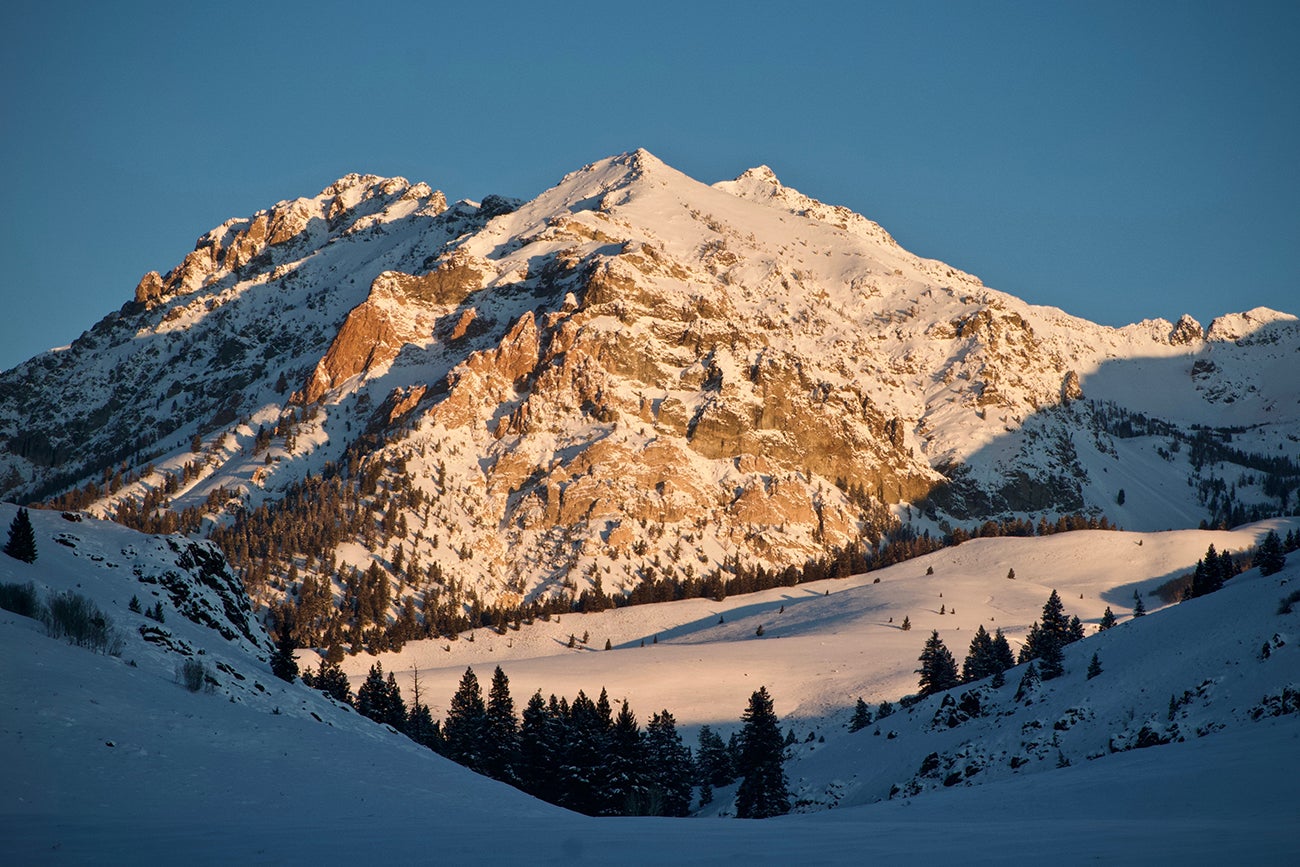
2022 Andrus Center Conference:
The Sawtooth National Recreation Area at 50: Our Legacy and Future Challenges
Conference Report and Findings
May 24, 2022 Boise State University
Andrus Center for Public Policy
The Sawtooth NRA was created 50 years ago to protect the iconic mountain landscapes of Central Idaho. Rather than create a National Park, Congress believed that a National Recreation Area would preserve the natural, scenic, historic, pastoral, and fish and wildlife values while also providing a recreational playground for Idahoans and the nation.
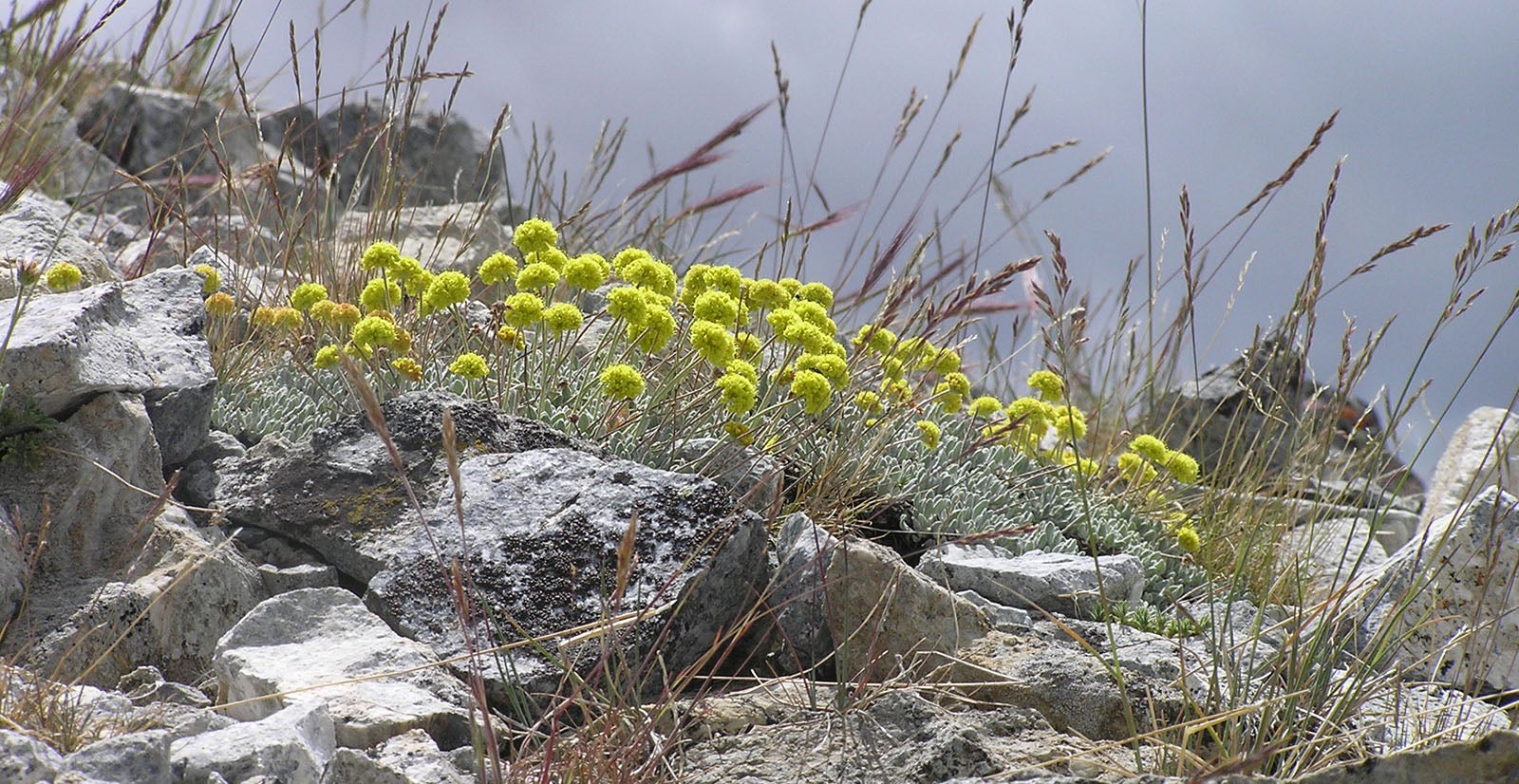
On Tuesday, May 24, 2022, the Andrus Center for Public Policy hosted a one-day virtual conference to explore how well this vision has been achieved, and to assess the protection challenges likely in store for this sanctuary of wilderness peaks, flowery meadows, and mountain lakes over the next 50 years.
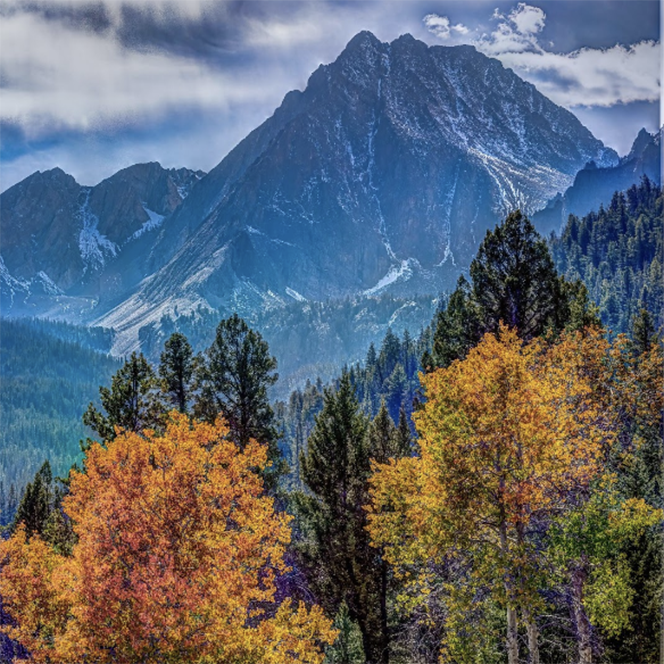
The Center was pleased to convene a series of keynote speakers and panels that include many of the diverse perspectives on the Sawtooth NRA’s past and future challenges. That list appears at the front of this conference report.
Schedule
The Sawtooth National Recreation Area at 50: Our Legacy and Future Challenges
Tuesday, May 24, 2022, Boise State University
8:45 – 9:00 Tribal Land Acknowledgement, Welcome, and Introductions
- Jessica James, Tribal Youth Education Manager, Shoshone-Bannock Tribes
- Dr. Emily Wakild, Director of Environmental Studies, School of Public Service, Boise State University, and incoming Cecil D. Andrus Chair
- Monica Church, Board member, the Andrus Center and Sawtooth Society, and incoming Executive Director, Frank Church Institute
9:00 – 10:00 Opening Keynote: Saving the Sawtooths: Creating Conservation Consensus in Idaho
Dr. Sara Dant, Brady Presidential Distinguished Professor and Chair of History, Weber State University, Ogden, Utah
10:00 – 10:45 Keynote: Shoshone-Bannock Tribes’ View on the Present and the Future
Dan Stone, Policy Analyst, Shoshone-Bannock Tribes
10:45 – 12:00 Panel: Sawtooth National Recreation Area at 50: How Have Things Measured Up?
Moderator, Andy Brunelle, Office of Governor Cecil Andrus (1987-1995); Capitol City Coordinator Idaho, U.S. Forest Service (1995-2022)
Panelists
- Patricia Young, Board member, Sawtooth Society (2005-present)
- Paul Ries, Area Ranger, Sawtooth National Recreation Area, U.S. Forest Service (1993-1998)
- Ken Paur, Office of General Council, USDA (1991-2021)
- Jim Lyons, Undersecretary of Agriculture, USDA (1993-2001); Board member, Sawtooth Society (2009-present)
- Cliff Hansen, Sawtooth Valley rancher, former Custer County Commissioner
- Pat Ford, former Executive Director of Idaho Conservation League
- Deb Bitton, Mystic Saddle Ranch and Redfish Lake Corrals
12:15 – 12:45 Luncheon Keynote: Proposed Legislation for a National Recreation Area System
U.S. Senator Ron Wyden (D-Oregon)
1:00 – 1:30 Panel: Climate Change Challenges the Sawtooth National Recreation Area
Moderator, Dr. Emily Wakild, Director of Environmental Studies, School of Public Service, Boise State University, and incoming Cecil D. Andrus Chair
Panelists
- Dr. Mojtaba Sadegh, Assistant Professor of Civil Engineering, Boise State University
- Daniel J. Isaak, Research Fish Biologist, Rocky Mountain Research Station, U.S. Forest Service
1:45 – 3:00 Panel: The Sawtooth National Recreation Area in the Coming Age of Mass Recreation and Cultural Change
Moderator, Steve Botti, Mayor, City of Stanley
Panelists
- Jeff Clegg, General Manager, Redfish Lake Lodge
- Kathryn Grohusky, Executive Director, Sawtooth Society
- Justin Hayes, Executive Director, Idaho Conservation League
- Steve Smith, Custer County Commissioner
- Angenie McCleary, Blaine County Commissioner
- Kirk Flannigan, Area Ranger, Sawtooth National Recreation Area, U.S. Forest Service
3:15 – 4:00 Panel: Findings for the Future of the Sawtooth National Recreation Area
Moderator, Rocky Barker, author and environmental journalist (retired)
Panelists
- Dr. Katherine Himes, Executive Director, James A. & Louise McClure Center for Public Policy Research, University of Idaho
- Monica Church, Board member, Andrus Center and Sawtooth Society, and incoming Executive Director, Frank Church Institute
- Dr. Emily Wakild, Director of Environmental Studies, School of Public Service, Boise State University, and incoming Cecil D. Andrus Chair
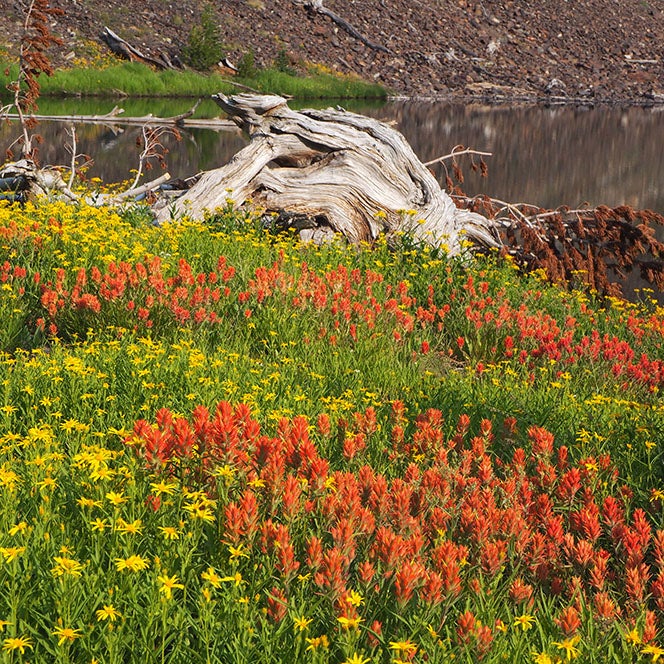
We are not observing just a birth. We haven’t achieved anything except the opening of a door. That which comes ahead of this is not going to be any more free from controversy than that which has preceded this.U.S. Representative Orval Hansen (R-Idaho)
Executive Summary of Findings
These findings represent an interpretation and distillation of key ideas presented by conference speakers and panelists. The findings reflect current conditions and future challenges facing the Sawtooth National Recreation Area (NRA). As such, this list may be useful in guiding management actions over the next 50 years.
- Passage of Public Law 92-400 in 1972, designating the Sawtooth NRA, was a unique bipartisan conservation consensus, with active support by all four members of the Idaho Congressional delegation and the Governor, a rare event in Idaho history.
- Designation of the Sawtooth NRA provided protection of backcountry areas and the unique authority to secure scenic easements in the front country. This two-pronged approach was effective as the Sawtooth Mountains were designated as Wilderness, the entire Sawtooth NRA (including the White Cloud Mountains) was protected from new mining claims, and acquired easements arrested development threats of 1960s-era subdivisions.
- In its first 50 years, the Sawtooth NRA became the iconic outdoor recreation mecca for Idaho. Despite its popularity, it continued to provide quality recreation experiences, and threats to natural and historic resource values were generally manageable. Rapid population growth within Idaho, combined with increasing visibility and promotion of the Sawtooth NRA on social and commercial media, is changing that situation.
- In 1991, the Shoshone-Bannock Tribes petitioned for Endangered Species Act protection of sockeye salmon, which, coupled with protection for Chinook salmon, greatly increased focus and attention on fisheries’ habitat and Tribal treaty rights.
- Despite success with salmon and steelhead habitat protection in the Sawtooth Valley, the trend toward extinction continues. If problems with downstream Federal dams can be solved, climate scientists are confident that the Sawtooth NRA’s high-elevation habitat can sustain salmon through the climate bottleneck.
- Climate change and the accumulation of available fuel in Sawtooth NRA forests present an increasing threat of catastrophic wildfire. These wildfires threaten infrastructure, public safety, and scenic, recreation, and ecological values. Accelerated hazard fuels reduction efforts are needed to mitigate this threat.
- In the near future, increasing visitor use may drive the need to regulate and/or restrict visitor use in some parts of the Sawtooth NRA in order to preserve resource values and ensure quality recreation experiences. Developing an equitable permit system to achieve this must be done in partnership with local governments, Tribes, non-governmental organizations, and the public.
- Maintaining access to outfitter and guide services is an important goal for preserving traditional Sawtooth NRA use and providing quality recreation experiences that otherwise might not be available to many people.
- Specific portions of Senator Ron Wyden’s initial Recreation, Not Red Tape Act called for establishment of a National Recreation Area System. Such a system, with its own line item in the federal budget could help relieve some of the Sawtooth NRA’s funding shortfalls.
- Public appreciation of Sawtooth NRA values, including scenic, natural ecological, fish and wildlife, and recreation, will increase as opportunities to preserve these values diminish in other places. It will be especially important to preserve wildlife species such as salmon because of their role in maintaining critical ecosystem function and because preserving habitat and wildlife populations will be critical to future recreation experiences.
- The U.S. Forest Service now holds scenic and conservation easements on most of the 20,000 acres of private land within the Sawtooth NRA. These easements have become increasingly complicated and more costly as focus has shifted from subdivisions to large, single parcels that include larger dwellings with increased property values. Administration of these easements is likely to become more difficult and contentious in the future because different easements contain different requirements, counties and U.S. Forest Service jurisdictions overlap, and property ownership changes sometimes result in different interpretations of easements. The U.S. Forest Service needs the capacity to strengthen easements for willing owners.
- Expanded visitor services on public and private lands will be needed to accommodate increased tourism, but the lack of affordable workforce housing will continue to be a constraint in providing these services.
- Since designation of the Sawtooth NRA, fiscal challenges have emerged as flat and declining budgets limit additional visitor and resource management capacity. The U.S. Forest Service needs greater capacity to manage a growing number of visitors participating in a growing diversity of outdoor activities. More staff and funding are needed. More partnerships and volunteers are needed also, but only if additional staff can be available to effectively manage them and leverage their efforts. Consideration should be given to development of a public-private partnership that establishes a trailhead/entry point program.
- Crafting solutions to these future challenges will require collaboration among the business community, non-profit community, Federal land managers, elected officials, local residents, and Native American Tribes. This will involve collaborative planning and evaluation of management alternatives, along with educational and interpretive outreach to enhance appreciation of the Sawtooth NRA and protect its resources.
Saving the Sawtooths: Creating Conservation Consensus in Idaho
Return to the introduction
Dr. Sara Dant, environmental historian, presented the opening keynote which addressed the important and complicated history of the designation of the Sawtooth NRA. She described the Sawtooth Mountains,
When we talk about the Sawtooth Mountains, we are talking about 42 peaks jetting more than 10,000 feet into the clouds, 180 gem-like lakes…and the headwaters of five of the important tributaries to the Columbia River System.
Indigenous people, ancestors of the Shoshone-Bannock Tribes, provided stewardship of this area no less than 10,000 years prior to the arrival of Euro Americans. Trappers came to the area in the early nineteenth century, but discoveries of gold and silver in the 1860s and 1870s brought an influx of people. When the mining boom subsided at the turn of the century, ranching became important. This period laid the foundational history of resource extraction in the Sawtooths.
At the same time, this area began to attract conservation attention. Establishment of the U.S. Forest Service in 1905 allowed for the creation of a Forest Reserve to protect the area from over-grazing and over-harvesting of timber. The Sawtooths were nicknamed the “Alps of America”, and by 1911, the Idaho Federation of Women’s Clubs began a crusade to establish a National Park in the Sawtooths. National publicity prompted Idaho Senator William Borah and Congressman Addison Smith to introduce park legislation in 1916. Opposition to the bill arose from resource user interests. Miners, loggers, and sheep ranchers were fearful that National Park designation would restrict their uses. There also was concern that tourist access and accommodations in the remote Sawtooths were inadequate. Also brewing was rivalry between the National Park Service and Forest Service. Early National Parks had been carved out of existing Forest Service lands; the Forest Service interpreted this as a reprimand.
It wasn’t until 1936 that Idaho Senator James Pope introduced another bill to establish a National Park in the Sawtooths. Again, resource user interests opposed the designation. A year later, the Forest Service delineated over 200,000 acres as the Sawtooth Primitive Area, a recent designation category established by the Forest Service to “prevent unnatural alteration of unique natural values,” and to keep the National Park Service at bay.
The National Park idea returned after the 1956 election of Frank Church. In 1960, he proposed legislation to study the feasibility of carving a Sawtooth National Park out of the Sawtooth Primitive Area. This mobilized both sides of the debate, but the bill died in Congress. However, after being re-elected in 1962 by a healthy margin, Church continued to pursue his goal. In 1965, a joint Department of Agriculture and Department of Interior report recommended either National Park or National Recreation Area designation. The next year, Church introduced two bills: one for a National Park, and another (co-sponsored with Senator Len B. Jordan) for a National Recreation Area, similar in size to the Park bill, but allowing greater latitude in management of hunting, mining, timber harvest, and grazing. Church held public hearings to learn what Idahoans wanted. Testimony overwhelmingly favored a National Recreation Area. So, Church prioritized the National Recreation Area. He later wrote to a constituent, “If we begin with a Recreation Area, we might eventually have a Park, but if we go back to the Park proposal now, we might never even have a Recreation Area.” But the bill languished in the Interior Committee.
In 1968, New York-based American Smelting and Refining Company (ASARCO) surveyed the remote, but unprotected, White Cloud Mountains for molybdenum, an iron and steel alloy used for manufacturing autos and planes. ASARCO filed for a permit from the Forest Service to build roads and develop an open pit mine in the area. They boasted that the project would create hundreds of jobs and yield significant tax revenues for Idaho. ASARCO’s proposal galvanized a diverse coalition in opposition to mining the White Clouds. Many of these interest groups had long been opposed to a National Park. The Idaho Statesman argued that the state was not so desperate for dollars that it would sacrifice the “crown jewels” of its natural heritage for relatively short-term dollar benefits.
Church and Jordan amended their National Recreation Area bill in 1969 to include the threatened White Clouds, which passed the Senate. However, in 1970, the bill died in the House Interior Committee.
But it was in the 1970 Idaho Governor’s race that ASARCO’s proposal became a primary issue. Incumbent Governor Don Samuelson sided with ASARCO; challenger Cecil Andrus opposed ASARCO and championed protection of the area. Andrus said,
The most important long-range issue is the protection of our magnificent Idaho environment. We must not allow irreplaceable natural resources to be destroyed for temporary economic gain. We cannot tolerate the abuse and destruction of the White Clouds.
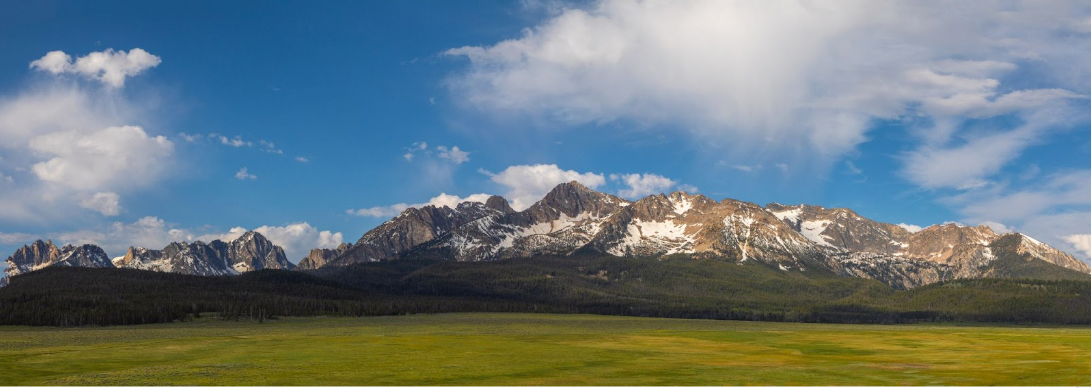
A great challenge awaits us in the future to adapt and accommodate ourselves to the welcome that we must give the people who will come here in ever-increasing numbers.U.S. Representative James McClure (R-Idaho)
Andrus became Idaho’s next Governor. In 1971, the entire Idaho delegation introduced Sawtooth National Recreation Area legislation that included the Sawtooths, White Clouds, and Boulders, ordered a National Park feasibility study, and included a mineral withdrawal. ASARCO’s proposal was effectively blocked. The legislation also gave the Secretary of Agriculture the unprecedented authority to manage private lands contained within the National Recreation Area by allowing for the purchase of scenic easements and regulating building design. Such easements were included to ensure that land speculation and subdivision would not mar the historic views of the Sawtooths from the valley, and to preserve resource rights as long as they do not negatively affect the environment.
On August 22, 1972, Congress established the 756,000-acre Sawtooth National Recreation Area, including 216,000 acres of Wilderness.
Dant shared the thoughts of a frustrated supporter for a National Park designation:
The Sawtooth National Park was often conceived but never born and, significantly, the struggle to set aside the Sawtooths not only showcased the federal battles over public lands, but they also mirrored a larger national trend away from the primacy of resource extraction and more toward environmental preservation.
Dant speculated that, if sometime during the 60 years preceding establishment of the Sawtooth National Recreation Area, the area had become a National Park, it is possible that Idahoans would have had to sell their “regional identity soul in order to cater to tourists” from across the country and world. She believes that Idahoans got the “almost perfect hybrid of a Park and Recreation Area with the designation.” She attributes this to the consensus-building politics of Church, and cites that Congressman Mike Simpson successfully has used this strategy also.
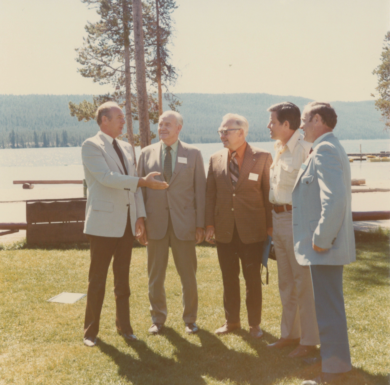
There isn’t a more magnificent country than what we see today. The establishment of a National Recreation Area here is something that we as citizens of Idaho can be proud.Governor Cecil D. Andrus (D-Idaho)
Shoshone-Bannock Tribes’ View of the Present and Future
Daniel Stone, an enrolled member of and policy analyst for the Shoshone-Bannock Tribes, presented the second keynote to address tribal legacy in Central Idaho, the role and future of salmon in the Sawtooth NRA, and opportunities to protect watersheds and landscapes.
Stone described the Sawtooth NRA as an integral part of his people’s homeland for thousands of years, where they harvested seasonal foods including camas bulbs from meadows south of the Sawtooths and Chinook and sockeye salmon from the rivers. He explained that these resources allowed the Tribes to build a society that lasted for millennia. After the arrival of Euro Americans, the Tribes were forced to build a new life at Fort Hall Reservation, a long way from their homelands. However, rights expressly reserved through the Fort Bridger Treaty of 1868 allowed the Tribes to travel back to their homelands to harvest subsistence foods. Over time, though, the Tribes witnessed the disappearance of salmon from most of the Snake River and its tributaries. Stone explained,
We had watched the development of the Snake River System extirpate run after run and tributary after tributary and homeland after homeland, and what we were fighting to save was this one last portion of the basin, the Upper Salmon, the Sawtooth Valley, and this one iconic fish that we’ve named an entire lake after… They’re one of the longest run and the highest climbers out of any sockeye species; they travel hundreds of miles and gain thousands of feet in elevation to reach their spawning beds in the Sawtooths. The sockeye are part of our creation as a people; they’re part of the Sawtooth NRA; they’re the foundation of the ecosystem that we all love…
Reduction in numbers of salmon and the consequent dramatic loss of marine-derived nutrients in the Sawtooth ecosystem prompted the Tribes in 1991 to successfully petition the listing of Snake River sockeye for protection under the Endangered Species Act. Stone offered other suggestions for meeting the already-evident challenges of the future,
As I look ahead to the challenges facing my homelands there in the Sawtooths, I can see opportunities to proactively protect both watersheds and our access to the dramatic landscapes of the Sawtooth NRA. Thankfully, there were legal protections, easements for access [and] viewsheds. Maybe we need to go back and reevaluate those for compliance on a more normative interval; maybe we need to reevaluate those in the context of new development; [maybe we need] changes in policy…We can collectively establish new access corridors, new trail systems that allow for interconnection through and around private developments, so that the public is still able to access those landscapes. I want to ensure that watersheds remain a refuge for cold water biota like salmon, and [I want to protect] wet meadow habitat through conservation easements or acquisition along river corridors to… increase watershed retentive capability and increased resiliency of the area…
Stone speculated further about the future,
What would be the actual harm in returning portions [of the Sawtooth NRA] to the Tribes in recognition of our presence? What would be the harm in allowing the Tribes to affect meaningful conservation measures on these landscapes in perpetuity, using our current system of governance? We can truly acknowledge the Tribes’ continued efforts to preserve lands across Idaho by restoring their rights to it and ensuring future generations have a connection to that landscape and access to the high peaks our ancestors called home.
The Sawtooth NRA at 50: How Have Things Measured Up?
Andy Brunelle, associated with the Sawtooth NRA for 35 years through his work on Governor Andrus’ staff and with the U.S. Forest Service, moderated this panel to explore the successes and challenges of the Sawtooth NRA legislation, asking the question, “how have things measured up?” over the past 50 years.
The purposes of PL-92-400 that designates the Sawtooth NRA
The Secretary shall administer the recreation area in accordance with the laws, rules and regulations applicable to the national forests in such manner as will best provide:
- the protection and conservation of the salmon and other fisheries;
- the conservation and development of scenic, natural, historic, pastoral, wildlife, and other values, contributing to and available for public recreation and enjoyment, including the preservation of sites associated with and typifying the economic and social history of the American West; and
- the management, utilization, and disposal of natural resources on federally owned lands such as timber, grazing, and mineral resources insofar as their utilization will not substantially impair the purposes for which the recreation area is established.
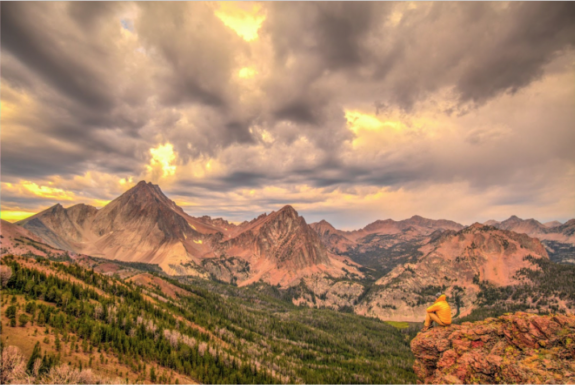
Cliff Hansen, long time landowner and rancher in the area and an elected Custer County Commissioner for 20 years, viewed the law as effective in preserving scenic values through the purchase of scenic easements within the Sawtooth Valley, and moderately effective in preserving pastoral and ranching activities. He noted that other events and laws, such as the Endangered Species Act related to fisheries protection, affected cuts in grazing levels. He also observed that the loss of some dispersed camping and recreation access opportunities were due to U.S. Forest Service natural resource protection measures. Hansen described his personal history with a scenic easement,
My parents actually got the first easement in the Sawtooth NRA, and one of the reasons why [is that] they were getting along in years and really didn’t have any retirement, and to sell property was something that people were doing. So, they took the first easement, and it worked out really good. I have to live with the easement. It’s not too restrictive. We can’t subdivide, but we’re still running livestock up there and continuing to run it as a ranching operation. But, no, I think the easements were a good idea.
Ken Paur, a USDA attorney for 20 years, described in detail the unique provisions of the law that authorized the U.S. Forest Service to acquire conservation and scenic easements to preserve the scenic and natural values of the Sawtooth NRA. He reported that great progress was made in acquiring easements during the 1970s and 1980s, but, in the 1990s, the pace slowed as funding dried up and the purchase price of an easement greatly increased. Paur explained,
The successful conservation easement acquisition program changed the real estate market up there. Whereas people previously were looking for small lots to build … an 800-square foot cabin to go up to on weekends, those rights were, by and large, bought up. What you have up there now are some large tracts, as much as 80-90 acres of base property, where the subdivision development rights have been bought up so they can’t be subdivided into small cabins. The market for those properties became people with enough money to buy a 90-acre parcel and put a very large, nice, recreation or, even, full-time residence on it. Questions [are] about whether that kind of development and those kinds of structures are consistent with the values of the Sawtooth NRA. It’s a different kind of easement that you acquire on that property, where we’re not acquiring development rights but looking more at limitations on the type of development that can still occur on the property, [such as] how big buildings can be, what the architectural style can be.
Paul Ries became Sawtooth NRA Area Ranger in 1993. He recounted meeting with Governor Cecil Andrus as one of the first things he did upon arrival in Idaho,
One of the first things I did … was to go to Boise and meet with Governor Cecil Andrus. And right off the bat, he explained to me that Idaho did not have a National Park; Idaho had the Sawtooth NRA, which was better than a National Park. The way he described it, it had all the benefits of a Park plus the benefits of the historic uses. He also talked about what a special place it was for all Idahoans, and, really, [for] people from all over the world, and the bipartisan effort that it took to create it. That was a special meeting for me because it helped me understand a lot of the background and the intents and purposes behind the law.
The continued erosion in U.S. Forest Service funding for staffing and scenic easement purchases was a dominant force during this time. The threat of residential development of a large tract of land in the mid 1990s led Paul Reis and Bethine Church to establish the Sawtooth Society. They enlisted Andrus, former Senator James McClure, and former U.S. Representative Orval Hansen to lead the organization and lobby to get increased funding to reinvigorate the scenic easement program. Currently, there are more than 90 conservation and scenic easements that cover some 85 percent of the private land within the Sawtooth NRA. The cumulative acquisition costs exceeded $70 million under this program.
Protecting the backcountry was a big part of the Sawtooth NRA law. It designated the 217,000-acre Sawtooth Wilderness on the western side and a Wilderness Study Area in the Boulder and White Cloud Mountains, plus it prohibited new mining claims throughout the entire NRA. On balance, the law was seen as effective, with two important qualifiers. First, access throughout the backcountry has become more challenging with the decrease in funding for trail crews to keep hiking trails open and well-maintained. Long-time outfitter, Deb Bitton, noted that volunteer groups and licensed outfitters are making the effort to fill in portions of the shortfall where they can. She explained the role of outfitters,
Not a lot of people on their own can really get to and experience a backcountry given the skills and the other facilities [needed] … but if you don’t have the expertise yourself and you still want to not just look at those mountains but you want to get back in those mountains, you need somebody that’s going to take you and that’s the outfitter industry.
A second qualifier, cogently asserted by Pat Ford, former Executive Director of the Idaho Conservation League, is related to the first purpose stipulated in the Sawtooth NRA law, the protection and conservation of salmon and other fisheries. This purpose is not being met because of factors outside of the Sawtooth NRA and outside of the control of U.S. Forest Service. The Lower Snake River dams that are part of the Federal Columbia River Power System are well-established as the overriding factors that imperil the salmon runs. Ford explained,
When the Area was created in 1972, it is likely that the Sawtooth NRA had something on the order of 10,000 salmon and steelhead, particularly Chinook salmon, coming into the area. Congressman Simpson, having gotten interested in the Sawtooth NRA, and having spent 15 years trying to get legislation done for the White Clouds Wilderness, has now picked up the cause of salmon. Good for Congressman Simpson! There is foment in the region as everyone knows…how we can try to protect those salmon, and it centers around the Lower Snake River dams, Federal dams.
Despite these qualifiers, the panel noted that the additional Wilderness designations in 2015 for the Hemingway-Boulders, Cecil D. Andrus-White Clouds, and James McClure-Jerry Peak Wildernesses reflected the quality of the roadless lands. These lands had been maintained in a condition that qualified them for Wilderness status.
A final theme from the panel was acknowledgement of the enduring legacy of the bipartisan sponsors of the 1972 legislation. The panel also recognized the establishment of the Sawtooth Society, led by Bethine Church to reinvigorate scenic easement purchases, to lobby the Idaho Congressional Delegation to increase Sawtooth NRA funding, and to facilitate long-term planning, such as the Vision 2020 project. Sawtooth Society board member, Patricia Young, noted that Church was motivated by her decades-long connection to the area because her parents had homesteaded the Robinson Bar Ranch in the early 20th Century.
Young described the Vision 2020 project,
The whole idea of the 2020 project was really pulling everybody in that had stakes in the Sawtooth NRA. So, there were outfitters, there were businesses, there was the Forest Service, just sort of everybody that we could think of to become part of really talking about what are our shared values, what are our shared visions for this marvelous area.
Jim Lyons, former Undersecretary of Agriculture, noted that the bipartisan heritage of the Sawtooth NRA Act of 1972 extended into the early 1990s, when U.S. Senator Larry Craig urged him to visit the Sawtooth NRA and pay special attention to its needs. Lyons observed,
I think one of the signatures of what happened there is the bipartisanship which was truly unique. I mean, Jim McClure and Orval Hansen and Senator Church finding a way to come together to resolve a long-standing issue… really set the stage for what’s been the chemistry for success as things have moved on. And now, we have Mike Simpson, who’s found a way to work with people to get these things done.
In many ways, the panel’s views can best be summarized by Senator James McClure’s 2005 assessment of the success and challenges facing the Sawtooth NRA:
I don’t know why I would focus on failures first, because I think, overall, it has been an outstanding success. I think the valley is better than it was, looks better than it was, is seen better than it was, and, therefore, I think it has been an outstanding success.
On the failure side, the only failures I can think of that are very prominent at all are the failures to be funded properly to do the activities that require expenditures. Now, that’s not the fault, only partly the fault of the Forest Service. That’s largely the fault of Congress… It’s the competition for funds.
Proposed Legislation for a National Recreation Area System
Oregon Senator Ron Wyden presented the luncheon keynote which addressed some of the elements and status of his proposed Recreation, Not Red Tape Act. Wyden believes that outdoor recreation is good not only for the soul, but for local economies, especially in rural communities. Unfortunately, outdated rules and regulations complicate and confuse what should be an easy process for outdoor enthusiasts to get permits and parking passes and pay fees. Wyden was happy to report that the Senate Energy and Natural Resources Committee passed a portion of his Recreation, Not Red Tape Act which will do these things:
- streamline rules for purchasing recreation permits;
- allow for federal and state passes to be purchased on the same website;
- encourage military branches to inform service members and veterans of outdoor recreation job opportunities;
- help volunteers get involved in reducing maintenance backlog on public lands; and
- establish a National Recreation Area System to create more recreation opportunities on public lands.
- Wyden explained how he understands the issue,
This sure isn’t a partisan issue. We know in the Northwest, after all, nobody is out there checking party registration before you lace up your hiking boots, buy bait, or pitch a tent.
He suggested that cutting red tape would decrease costs, allowing saved funds to be prioritized for current challenges at the Sawtooth NRA, including management of crowding, processing and housing volunteers. Senator Wyden is not a fan of implementing a permit system to limit crowding. He fears that such systems favor the wealthy.
Climate Change Challenges the Sawtooth NRA
Dr. Emily Wakild, Director of Environmental Studies at the School of Public Service at Boise State University, and incoming Cecil D. Andrus Chair, moderated this panel to explore the likely impacts of climate-driven changes in the coming 50 years at the Sawtooth NRA.
Dr. Moji Sadegh, assistant professor of civil engineering at Boise State University, explained patterns observed in the Western United States which include warming and drying associated with an increase in temperature,
Precipitation…in the Northwest has been stable from 1900 forward and, in…the Sawtooth area, annual precipitation has been rather constant since the 1900s, but the temperature has been increasing across the West. In… the Northwest, it has increased one to two point five degrees Fahrenheit, and in the Sawtooth area, it has increased between one and one point five degrees Fahrenheit…So, basically, one degree increase in the annual temperature translates into a lot higher…number of heat waves that we expect… Snowpack has been declining across the West… We have higher peaks, lower lows; the peaks are happening a lot earlier in the season. We have been seeing a lot of wildfires across the West associated with that drying and warming… Fires are becoming more intense, more severe…more destructive…more frequent…very severe, [and] they remove the vegetation.
(Precipitation and temperature data come from ground observations made by the National Oceanic Atmospheric Administration and optical satellite imagery.)
Dan Isaak, fisheries scientist with the U.S. Forest Service Rocky Mountain Research Station, explained what these patterns mean for cold water species that inhabit streams and rivers in the Sawtooth NRA. For the salmon and steelhead that migrate from their spawning and rearing areas in Central Idaho basins to the Pacific Ocean and back, evidence shows that spatial distributions and the times at which they migrate have been shifting in past decades in response to temperature. Physiological stresses increase as adult fish return to Idaho through increasingly warmer waters. Within critical spawning and rearing habitat, additional stresses can occur, including habitat disturbance due to wildfires and long-term stream flow declines. There also are cold water species such as cutthroat trout, resident rainbow trout, and bull trout that live their entire lifecycle within these streams and rivers. They are confined to stream networks that are affected by climate change based on their topography. Isaak observed that there is a wide range in how individual species will respond to such stresses.
Habitat shifts, including some habitats becoming more restrained and others becoming more optimal, have differential impacts on anadromous fish and resident species because of their different lifecycles. Isaak summed up the situation,
If we were to go to the point where it’s so warm that we only have one bull trout population left anywhere in the State, I guarantee you it will probably be in the Sawtooth NRA because there are really big, cold streams up there that will provide habitats for those fish for a long time. For anadromous species, the bottleneck isn’t so much what the conditions are on the Sawtooth NRA. Unfortunately, it’s more about that migratory corridor downstream from Idaho in the Lower Snake and Columbia Rivers. So, as it gets warmer over time, we start to see more of these large mortality events like we had in 2015..where the adults coming back…just can’t make it through that warm reservoir environment….We’re probably ultimately going to have to find ways to address some of those downstream mortality factors.
Isaak mentioned a range of on-the-ground measures that can be taken to make these landscapes more fish-friendly during climate change. These actions include improved culverts around roads, better separation of cattle from riparian zones to protect stream banks and to allow willows to grow next to streams, providing shade and bank stability.
Panelists addressed the ignition sources of wildfires–more than 84% of fires in the U.S. are started by humans. As visitation to the Sawtooth NRA increases, so does the potential for ignition and this further compounds the effects of the warming and drying phenomena. Sadegh described forests in the Sawtooth NRA as less “patchy” and denser as a result of fire exclusion. This unsustainable condition is occurring throughout the West. Isaak urged managers to prescribe burn to help reduce the continuity of fuels on the landscape so that fires, when they do occur, do not burn large swaths or entire drainages. He observed that the Northwest has a longer annual period of cold, wet weather that allows for staying within a burn prescription, unlike the Southwest, which has a shorter period.
Isaak pointed out that the Sawtooth NRA acts as a high elevation thermal refuge for humans, as well as nature. As the lower elevations become hotter, people will seek the relief of cooler temperatures. However, panelists discussed emission scenarios that point to more weather extremes. By the end of this century, these could include a heat index, a combination of temperature and relative humidity, of 90 degrees Fahrenheit, which is very uncomfortable, and a very high fire danger suggesting a 70 percent to 120 percent increase in the number of extreme fire danger days. The panel urged everyone to consider their own consumption habits and make efforts to de-carbonize their lifestyle so that, at the end of this century, adaptive capacity remains in Idaho’s landscapes.

The Sawtooth NRA in the Coming Age of Mass Recreation and Cultural Change
Steve Botti, Mayor of the City of Stanley, moderated this panel to explore the challenges facing the Sawtooth NRA in the next 50 years, specifically examining whether it will be feasible to maintain a rural and pastoral lifestyle in the Sawtooth Valley in harmony with outdoor recreation, natural, and historic values; whether it will be possible to preserve quality recreation experiences; and whether U.S. Forest Service management will be adequate to avoid substantial impairment of the scenic, natural, historical, and fish and wildlife values referenced in the Sawtooth NRA legislation.
Jeff Clegg, General Manager of Redfish Lake Lodge, opened the discussion by asserting what the goal of recreation-oriented businesses should be,
Share this beautiful area with anyone who wants to come, but do it in a very careful way that protects all of the environmental concerns that are being impacted by [so] many people.
The crowding and difficulty of finding available parking at Redfish Lake, especially on or near weekends, need to be managed and controlled in a way that allows the appropriate number of people to come and to share in the spectacular setting of Redfish Lake. At the same time, it is necessary to recognize that there’s going to be a limit to increasing use levels. Clegg believes that the Sawtooth NRA, at some point, will have to set carrying capacities to preserve quality experiences.
He also predicted that it will become increasingly difficult to find a place for employees to live in an affordable way, and to attract competent people to provide quality service to visitors. This is a problem faced by many local businesses and the solution will require continued effort by both private businesses and local government.
Clegg observed that 50 years ago, the impact of social media on tourism and recreation businesses was not anticipated. Now, it is challenging to manage and respond to information and opinions that can be instantly posted and broadcast. Marketing of Redfish Lake and management of visitor experiences need to be done in an integrated way. Other businesses in the area face the same social media and marketing issues, and these affect visitor expectations and behavior.
Maintaining a stable business environment when faced with frequent changes in U.S. Forest Service management and staff also presents challenges, especially for leaseholders like Redfish Lake Lodge and permit holders like outfitters. Consistency in relationships builds trust and is important in responding to the increasing demand for visitor services. Clegg finds that it is frustrating to gain momentum with someone and then have that momentum thwarted when personnel changes occur.
Katherine Grohusky, Executive Director of the Sawtooth Society, recalls experiencing the Sawtooth NRA for the first time,
The first time I saw the view from the Church overlook in July of 2019, I cried. I had tears from a homecoming to a place that I’ve never been, and a place I knew I wanted to stay forever, and it was really meaningful to me to see that view from the Church overlook. It’s incredible. So, I’m new but I have this really strong affinity for this particular forest and these mountains.
Grohusky identifies three key threats facing the Sawtooth NRA in the coming 50 years: development pressure, increasing recreational use, and wildfire. She anticipates that future increases in recreational pressure and use will require more public outreach. She suggests that collaborative approaches involving various organizations can provide the resources to be effective. Such an approach could include a program of trailhead stewards who provide a presence at main entry points of the Sawtooth NRA to contact visitors and provide information.
Justin Hayes, Executive Director of the Idaho Conservation League, cites cultural change as a major issue for the future of the Sawtooth NRA. He explains that the Federal government needs to do a better job engaging Native American Tribes in co-management and land ownership, emphasizing that it’s important to give voice to and amplify the needs and the rights of the Tribes that have for too long been ignored.
Fish and wildlife are a key value for the Sawtooth NRA. Hayes considers what local management can do to improve habitat and ensure future survival of the fish, even if the critical management activities, like removal of the four Lower Snake River dams, are not under the purview of the Sawtooth NRA.
Wildlife is one of the iconic values that the public especially enjoys, so preservation of habitat and wildlife populations will be critical to the future recreation experiences. As such, Hayes believes that wolf management is a key future challenge for the Sawtooth NRA. He recalled that shortly after wolf reintroduction, visitors had the opportunity to hear wolves howl when they were camping in the Sawtooth NRA. If they were lucky, they might even see wolves. That is becoming incredibly uncommon. Hayes believes that the way in which the state is managing wildlife in the Sawtooth NRA, especially wolves, is denying wolves their role in the ecosystem, and it’s denying all of the visitors who come to the Sawtooth NRA the opportunity to see wolves and to see the natural interactions between predator and prey. Hayes urged,
If we don’t protect the fish and wildlife that are on this landscape, we are really missing something. It is the fish and wildlife in combination with the splendor of this area that make it so special.
Hayes observed that the outfitter and guide community provides a high-quality recreation experience within the Sawtooth NRA. Maintaining access to outfitter and guide services is an important goal for preserving traditional Sawtooth NRA use and for providing quality experiences that otherwise might not be available to many people. Hayes explained,
I think that the outfitting-guiding community is an important part of the overall stewardship of the Sawtooth NRA. They’re skilled, talented people who introduce Idaho’s special places to folks who may not have skills, the capacity to do it on their own. And they’re also a pretty important part of the search and rescue component for the Sawtooth NRA. As use expands, we’re seeing a lot of people getting in a lot of trouble. They’ve got technology and they’re calling for help, and, in many times, outfitters and guides are sort of the first responders out there. They also play a critical role in identifying problems and [helping with] trail maintenance and also just as part of the local economy.
Hayes expressed concern that solitude will become a scarce resource in the future and resource impacts will increase. The Forest Service will need to consider limiting visitor use in some areas to preserve solitude and prevent overuse from substantially impacting resource values.
Steve Smith, Custer County Commissioner, weighed in on the value of collaboration and on some areas of disagreement. He anticipates that multiple use management and giving proper consideration to different points of view will continue to be important strategies for the Sawtooth NRA in the future. Congress and the U.S. Forest Service will need to continue to fund and strengthen collaborative management efforts, like Resource Advisory Committees, to balance protection goals.
The Sawtooth NRA mandate to preserve both pastoral and wildlife values can create conflicts. Smith explained such a conflict,
[A person] can hear all the wolves howling he wants, right next to my dead cow, but the thing that we’re really dealing with here is Sawtooth NRA [and] the challenges with the different viewpoints on multiple use on public lands…
The use of private lands within the Sawtooth NRA is an issue that Smith identified as a source of disagreement. The U.S. Forest Service purchased easements on many of the private lands, and the interpretation of permissible activities and private property rights have, in some cases, become contentious. To further complicate things, private lands within the Sawtooth NRA are subject to county planning and zoning ordinances, the easements were not all written at the same time or in the same way, and different rules apply to different properties. The Sawtooth NRA and the County will have to work together to manage these private lands.
Smith also identified public safety and wildfire response as growing challenges in the future. He warns that, on a busy weekend like 4th of July, there are about 20,000 cars going into the Redfish Lake area. That translates into about 40,000 to 60,000 people. A fast-moving wildfire in that area would present serious safety and evacuation challenges. This is an issue that also will require careful planning and coordination between the Sawtooth NRA and the County.
Smith observed that the Sawtooth NRA was not expecting or prepared for the great increase in demand for camping and recreation that occurred in response to COVID-19. This demonstrates how quickly changes can occur. Environmental impacts such as the possible invasion of zebra mussels could quickly and drastically change recreation at Redfish Lake and affect the environmental protection goals for the Sawtooth NRA.
Angenie McCleary, Blaine County Commissioner, shared some of Custer County Commissioner Steve Smith’s views. She believes that the U.S. Forest must continue to utilize collaborative outreach to forge its vision and achieve consensus on management initiatives. She agrees that Resource Advisory Committees play an essential role as do other collaborative initiatives, such as the Sawtooth Valley Wildland Fire Collaborative, tribal involvement, and coordination between Custer and Blaine counties. This outreach needs to establish common ground among the business community, the non-profit community, Federal land managers, and elected officials.
McCleary is concerned that the rapid population growth in Blaine County is bringing in people who lack the cultural background to understand how to safely recreate in the Sawtooth NRA and the Wilderness. This challenge will require an increase in education, interpretation, and public outreach services by the Sawtooth NRA and its cooperators.
Kirk Flannigan, Area Ranger, Sawtooth National Recreation Area, Sawtooth National Forest, acknowledges that the Sawtooth NRA has experienced a large increase in visitation and recreation use over the past few years. Between 2015 and 2020, survey data reveals that site visits increased by 87%, developed campground use increased by 17%, day use increased by 44%, and Wilderness use increased by 89%. Surveys indicate that many people feel that crowding is a concern, especially in front-country areas. Flannigan discusses his concern about the popularity of key sites, such as Redfish, Stanley, Alice, and Toxaway Lakes,
I see concentrations of individuals in specific locations…those highly used areas where we have significant impact of individuals that go there and, really, that’s the focus [of] where they want to be. That’s a direct impact… The indirect impact [is] those folks that are being displaced and going to other areas that are less visited. And you see this a lot in our lake system on the Sawtooth Front, where we now are seeing crowding… I don’t know if we can get ahead of it.
The impacts of this displacement need to be analyzed and the Sawtooth NRA travel management plans need to be updated. Managing this level of use in the future will require partnerships with local conservation and educational organizations. The U.S. Forest Service believes that the number and type of facilities, such as trails and campgrounds, are about right, but they need to be upgraded and maintained. At some point, it may be necessary to impose a permit system or fee to control use and balance resource protection with recreation opportunity. Flannigan sees the need to increase staff to successfully manage the Sawtooth NRA’s facilities and to monitor the impacts associated with increasing visitation.
The Sawtooth NRA in the Coming Age of Mass Recreation and Cultural Change
Steve Botti, Mayor of the City of Stanley, moderated this panel to explore the challenges facing the Sawtooth NRA in the next 50 years, specifically examining whether it will be feasible to maintain a rural and pastoral lifestyle in the Sawtooth Valley in harmony with outdoor recreation, natural, and historic values; whether it will be possible to preserve quality recreation experiences; and whether U.S. Forest Service management will be adequate to avoid substantial impairment of the scenic, natural, historical, and fish and wildlife values referenced in the Sawtooth NRA legislation.
Jeff Clegg, General Manager of Redfish Lake Lodge, opened the discussion by asserting what the goal of recreation-oriented businesses should be,
Share this beautiful area with anyone who wants to come, but do it in a very careful way that protects all of the environmental concerns that are being impacted by [so] many people.
The crowding and difficulty of finding available parking at Redfish Lake, especially on or near weekends, need to be managed and controlled in a way that allows the appropriate number of people to come and to share in the spectacular setting of Redfish Lake. At the same time, it is necessary to recognize that there’s going to be a limit to increasing use levels. Clegg believes that the Sawtooth NRA, at some point, will have to set carrying capacities to preserve quality experiences.
He also predicted that it will become increasingly difficult to find a place for employees to live in an affordable way, and to attract competent people to provide quality service to visitors. This is a problem faced by many local businesses and the solution will require continued effort by both private businesses and local government.
Clegg observed that 50 years ago, the impact of social media on tourism and recreation businesses was not anticipated. Now, it is challenging to manage and respond to information and opinions that can be instantly posted and broadcast. Marketing of Redfish Lake and management of visitor experiences need to be done in an integrated way. Other businesses in the area face the same social media and marketing issues, and these affect visitor expectations and behavior.
Maintaining a stable business environment when faced with frequent changes in U.S. Forest Service management and staff also presents challenges, especially for leaseholders like Redfish Lake Lodge and permit holders like outfitters. Consistency in relationships builds trust and is important in responding to the increasing demand for visitor services. Clegg finds that it is frustrating to gain momentum with someone and then have that momentum thwarted when personnel changes occur.
Katherine Grohusky, Executive Director of the Sawtooth Society, recalls experiencing the Sawtooth NRA for the first time,
The first time I saw the view from the Church overlook in July of 2019, I cried. I had tears from a homecoming to a place that I’ve never been, and a place I knew I wanted to stay forever, and it was really meaningful to me to see that view from the Church overlook. It’s incredible. So, I’m new but I have this really strong affinity for this particular forest and these mountains.
Grohusky identifies three key threats facing the Sawtooth NRA in the coming 50 years: development pressure, increasing recreational use, and wildfire. She anticipates that future increases in recreational pressure and use will require more public outreach. She suggests that collaborative approaches involving various organizations can provide the resources to be effective. Such an approach could include a program of trailhead stewards who provide a presence at main entry points of the Sawtooth NRA to contact visitors and provide information.
Justin Hayes, Executive Director of the Idaho Conservation League, cites cultural change as a major issue for the future of the Sawtooth NRA. He explains that the Federal government needs to do a better job engaging Native American Tribes in co-management and land ownership, emphasizing that it’s important to give voice to and amplify the needs and the rights of the Tribes that have for too long been ignored.
Fish and wildlife are a key value for the Sawtooth NRA. Hayes considers what local management can do to improve habitat and ensure future survival of the fish, even if the critical management activities, like removal of the four Lower Snake River dams, are not under the purview of the Sawtooth NRA.
Wildlife is one of the iconic values that the public especially enjoys, so preservation of habitat and wildlife populations will be critical to the future recreation experiences. As such, Hayes believes that wolf management is a key future challenge for the Sawtooth NRA. He recalled that shortly after wolf reintroduction, visitors had the opportunity to hear wolves howl when they were camping in the Sawtooth NRA. If they were lucky, they might even see wolves. That is becoming incredibly uncommon. Hayes believes that the way in which the state is managing wildlife in the Sawtooth NRA, especially wolves, is denying wolves their role in the ecosystem, and it’s denying all of the visitors who come to the Sawtooth NRA the opportunity to see wolves and to see the natural interactions between predator and prey. Hayes urged,
If we don’t protect the fish and wildlife that are on this landscape, we are really missing something. It is the fish and wildlife in combination with the splendor of this area that make it so special.
Hayes observed that the outfitter and guide community provides a high-quality recreation experience within the Sawtooth NRA. Maintaining access to outfitter and guide services is an important goal for preserving traditional Sawtooth NRA use and for providing quality experiences that otherwise might not be available to many people. Hayes explained,
I think that the outfitting-guiding community is an important part of the overall stewardship of the Sawtooth NRA. They’re skilled, talented people who introduce Idaho’s special places to folks who may not have skills, the capacity to do it on their own. And they’re also a pretty important part of the search and rescue component for the Sawtooth NRA. As use expands, we’re seeing a lot of people getting in a lot of trouble. They’ve got technology and they’re calling for help, and, in many times, outfitters and guides are sort of the first responders out there. They also play a critical role in identifying problems and [helping with] trail maintenance and also just as part of the local economy.
Hayes expressed concern that solitude will become a scarce resource in the future and resource impacts will increase. The Forest Service will need to consider limiting visitor use in some areas to preserve solitude and prevent overuse from substantially impacting resource values.
Steve Smith, Custer County Commissioner, weighed in on the value of collaboration and on some areas of disagreement. He anticipates that multiple use management and giving proper consideration to different points of view will continue to be important strategies for the Sawtooth NRA in the future. Congress and the U.S. Forest Service will need to continue to fund and strengthen collaborative management efforts, like Resource Advisory Committees, to balance protection goals.
The Sawtooth NRA mandate to preserve both pastoral and wildlife values can create conflicts. Smith explained such a conflict,
[A person] can hear all the wolves howling he wants, right next to my dead cow, but the thing that we’re really dealing with here is Sawtooth NRA [and] the challenges with the different viewpoints on multiple use on public lands…
The use of private lands within the Sawtooth NRA is an issue that Smith identified as a source of disagreement. The U.S. Forest Service purchased easements on many of the private lands, and the interpretation of permissible activities and private property rights have, in some cases, become contentious. To further complicate things, private lands within the Sawtooth NRA are subject to county planning and zoning ordinances, the easements were not all written at the same time or in the same way, and different rules apply to different properties. The Sawtooth NRA and the County will have to work together to manage these private lands.
Smith also identified public safety and wildfire response as growing challenges in the future. He warns that, on a busy weekend like 4th of July, there are about 20,000 cars going into the Redfish Lake area. That translates into about 40,000 to 60,000 people. A fast-moving wildfire in that area would present serious safety and evacuation challenges. This is an issue that also will require careful planning and coordination between the Sawtooth NRA and the County.
Smith observed that the Sawtooth NRA was not expecting or prepared for the great increase in demand for camping and recreation that occurred in response to COVID-19. This demonstrates how quickly changes can occur. Environmental impacts such as the possible invasion of zebra mussels could quickly and drastically change recreation at Redfish Lake and affect the environmental protection goals for the Sawtooth NRA.
Angenie McCleary, Blaine County Commissioner, shared some of Custer County Commissioner Steve Smith’s views. She believes that the U.S. Forest must continue to utilize collaborative outreach to forge its vision and achieve consensus on management initiatives. She agrees that Resource Advisory Committees play an essential role as do other collaborative initiatives, such as the Sawtooth Valley Wildland Fire Collaborative, tribal involvement, and coordination between Custer and Blaine counties. This outreach needs to establish common ground among the business community, the non-profit community, Federal land managers, and elected officials.
McCleary is concerned that the rapid population growth in Blaine County is bringing in people who lack the cultural background to understand how to safely recreate in the Sawtooth NRA and the Wilderness. This challenge will require an increase in education, interpretation, and public outreach services by the Sawtooth NRA and its cooperators.
Kirk Flannigan, Area Ranger, Sawtooth National Recreation Area, Sawtooth National Forest, acknowledges that the Sawtooth NRA has experienced a large increase in visitation and recreation use over the past few years. Between 2015 and 2020, survey data reveals that site visits increased by 87%, developed campground use increased by 17%, day use increased by 44%, and Wilderness use increased by 89%. Surveys indicate that many people feel that crowding is a concern, especially in front-country areas. Flannigan discusses his concern about the popularity of key sites, such as Redfish, Stanley, Alice, and Toxaway Lakes,
I see concentrations of individuals in specific locations…those highly used areas where we have significant impact of individuals that go there and, really, that’s the focus [of] where they want to be. That’s a direct impact… The indirect impact [is] those folks that are being displaced and going to other areas that are less visited. And you see this a lot in our lake system on the Sawtooth Front, where we now are seeing crowding… I don’t know if we can get ahead of it.
The impacts of this displacement need to be analyzed and the Sawtooth NRA travel management plans need to be updated. Managing this level of use in the future will require partnerships with local conservation and educational organizations. The U.S. Forest Service believes that the number and type of facilities, such as trails and campgrounds, are about right, but they need to be upgraded and maintained. At some point, it may be necessary to impose a permit system or fee to control use and balance resource protection with recreation opportunity. Flannigan sees the need to increase staff to successfully manage the Sawtooth NRA’s facilities and to monitor the impacts associated with increasing visitation.
Thank you to our sponsors and donors for making this event possible.
Donors: Lois McClure Smith and Ruth McClure
Sponsors: National Wildlife Federation, Idaho Rivers United, Perpetua Resources

